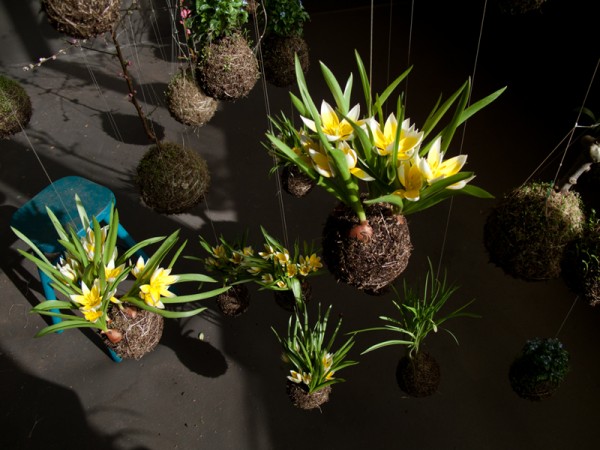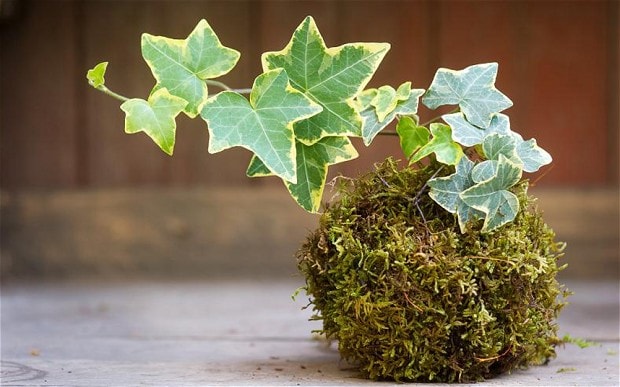Kokedama
Sorry, that didn’t work.
Please try again or come back later.
503 Error. Service Unavailable.
Kokedama isn’t exactly carefree. Depending on the weather and the type of plant used, plants will need watering twice a week or more. Tropical plants are probably the most successful: anthuriums, philodendrons, asparagus ferns, orchids, begonias, angel hair vines, coleus, staghorn ferns, echeverias and other succulents. Herbs, prostrate rosemary being a favorite, also perform well.

Designs seen above from Fedor Van Der Valk
How to do it
Peter Smith of City Planter, PA has helped to put kokedama on the US map. He found instructions on various YouTube sites when starting out with kokedama. From there, he fine-tuned those methods to suit his style.
- He starts by mixing two-thirds peat moss with a third akadama, a surface-mined mineral with the consistency of granular clay that drains rapidly, but also achieves the mud-cake composition needed to hold the roots together.
- In a bucket, he mixes the peat and akadama together until the mixture is sopping wet. Then he takes his green victim, shakes off the original soil until the majority of the roots are exposed (an exception are plants that wilt easily, such as coleus and ferns – their roots and the original soil are left more intact).
- Then he slaps an inch-deep layer of the soggy akadama/peat soil mixture onto the roots, creating a ball about the same volume as the original pot.
- He gives the ball a squeeze to release the dripping moisture and lays out a blanket of sheet moss to envelope the ball, gathering it around the stem.
- Then comes the waxed polyester or cotton cord (most practitioners seem to agree that fishing line doesn’t look right).
- He wraps the moss so it is secure, but not mummy-ish, and then he ties the string in. Finally, he creates a loop of cord of the desired length, and hangs the plant.






